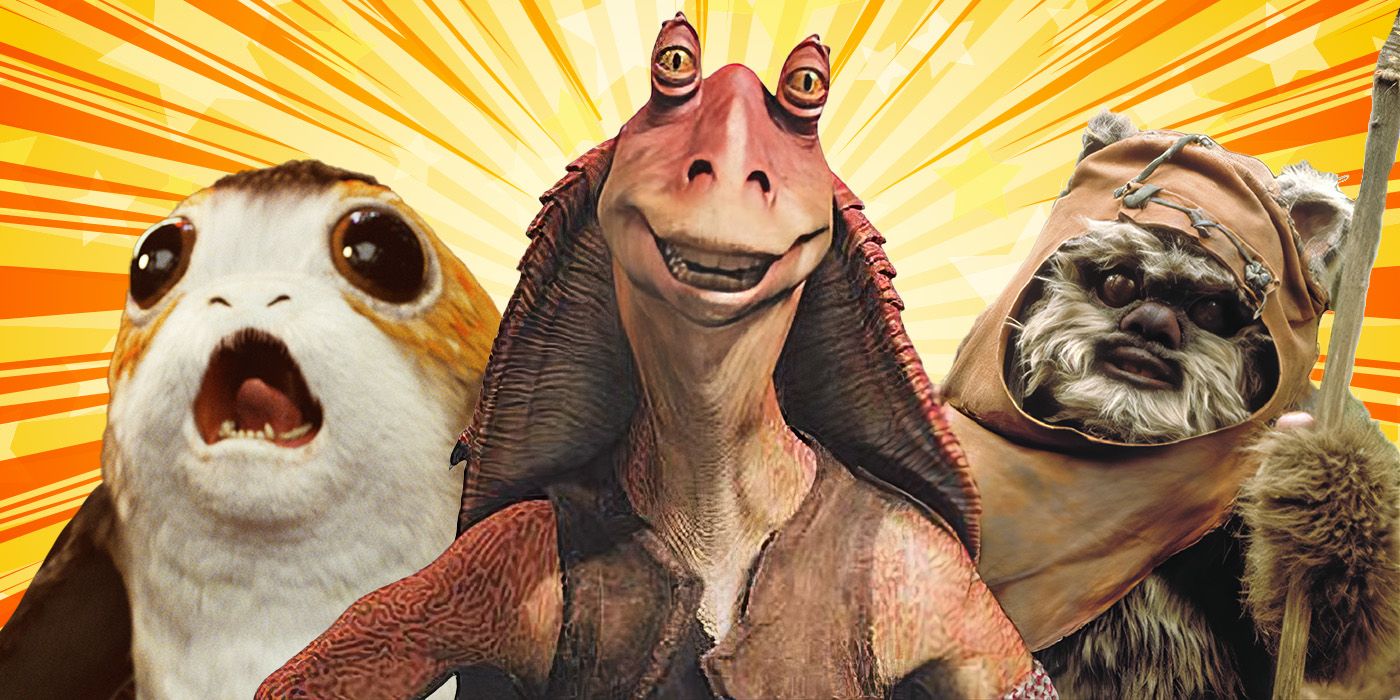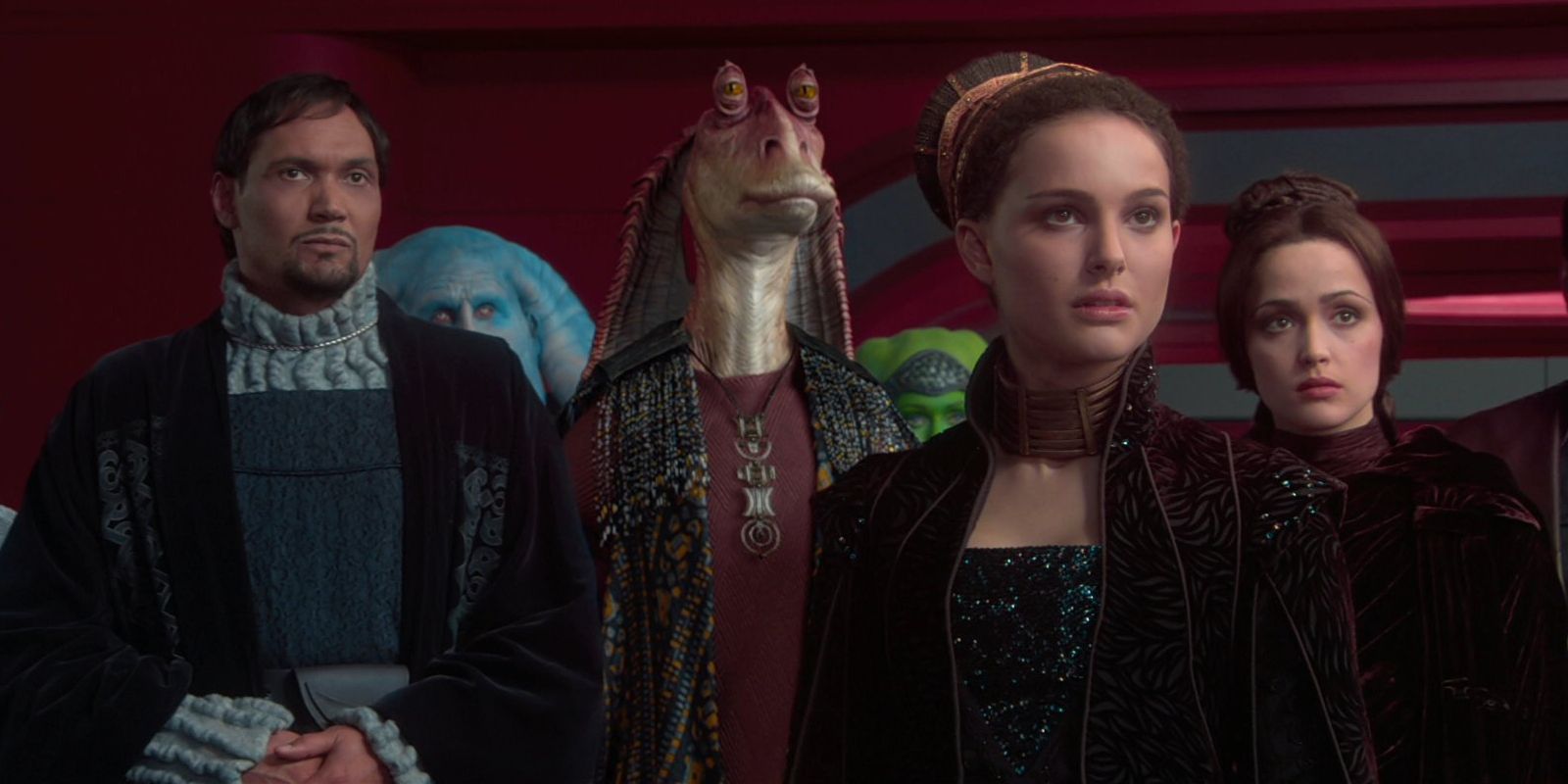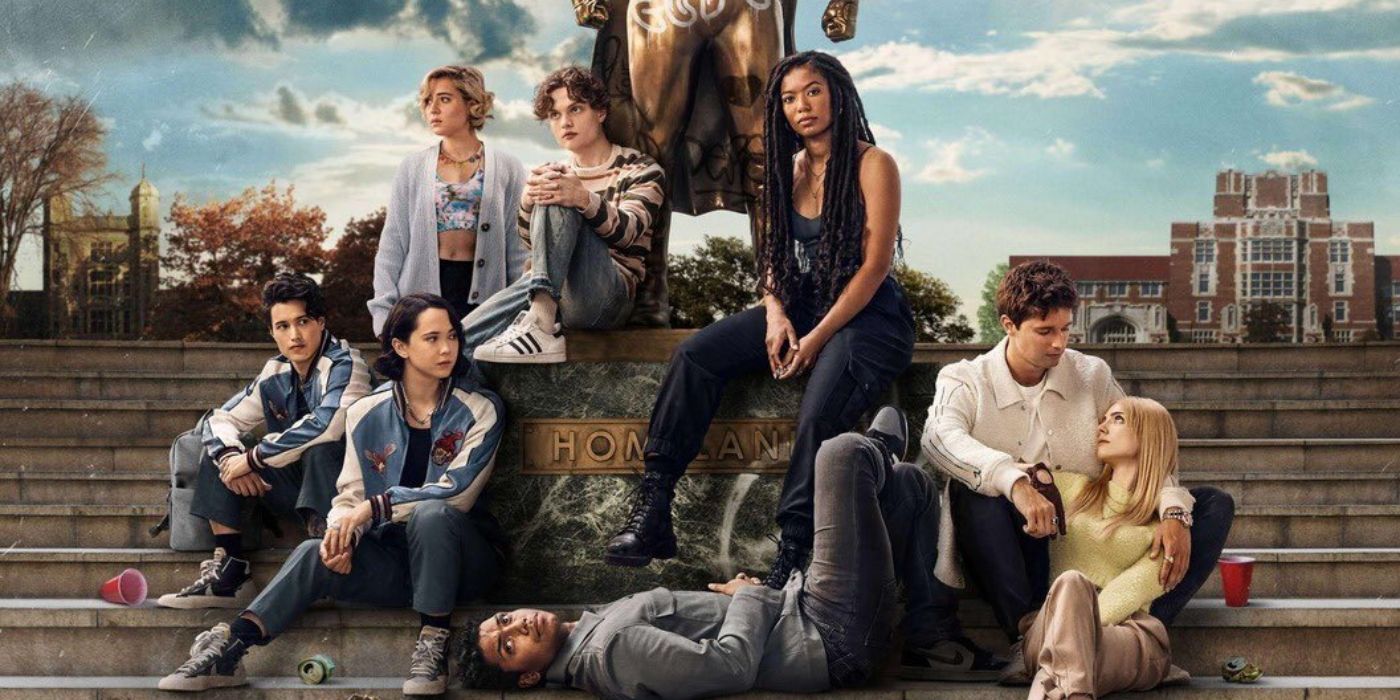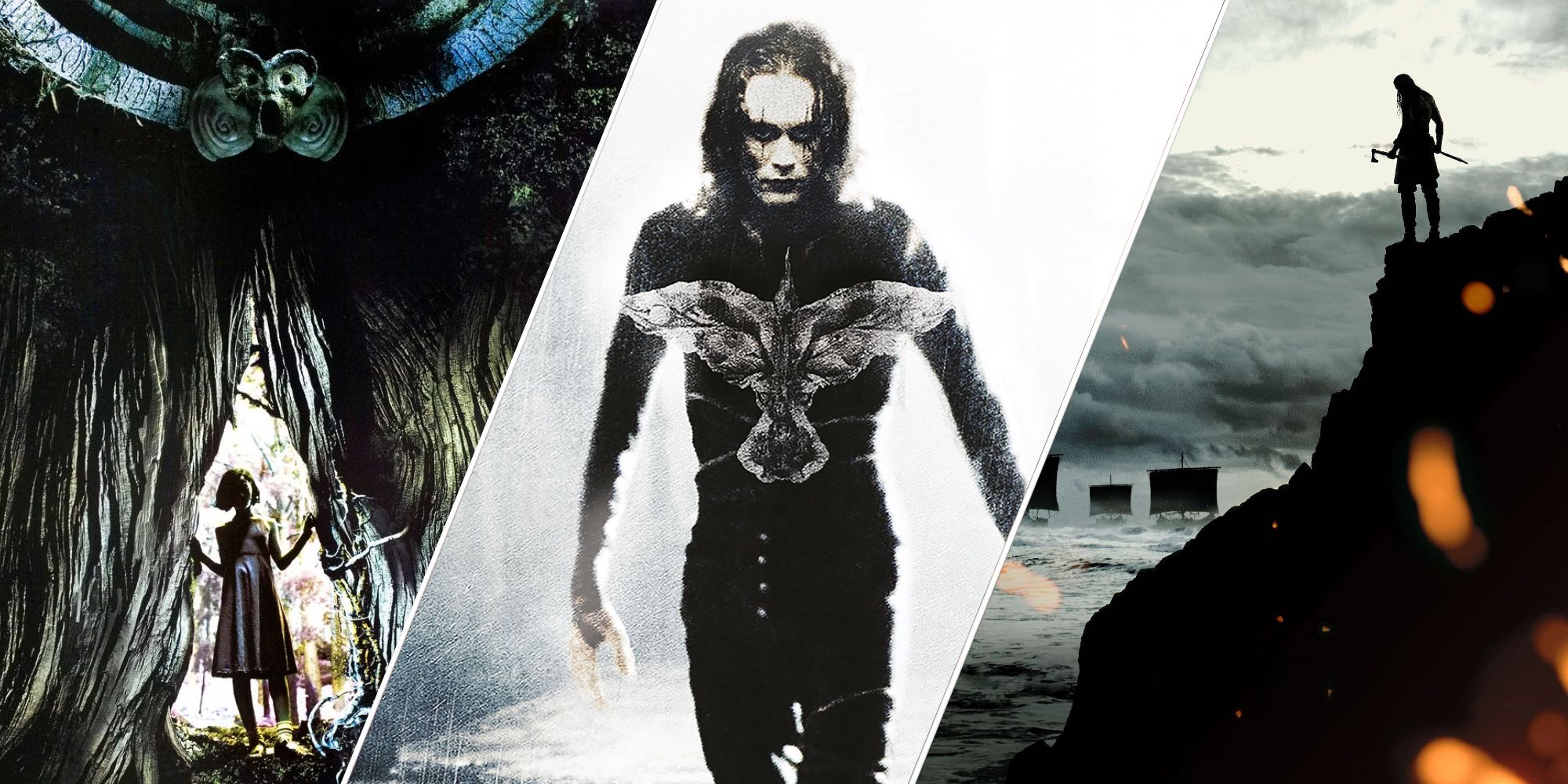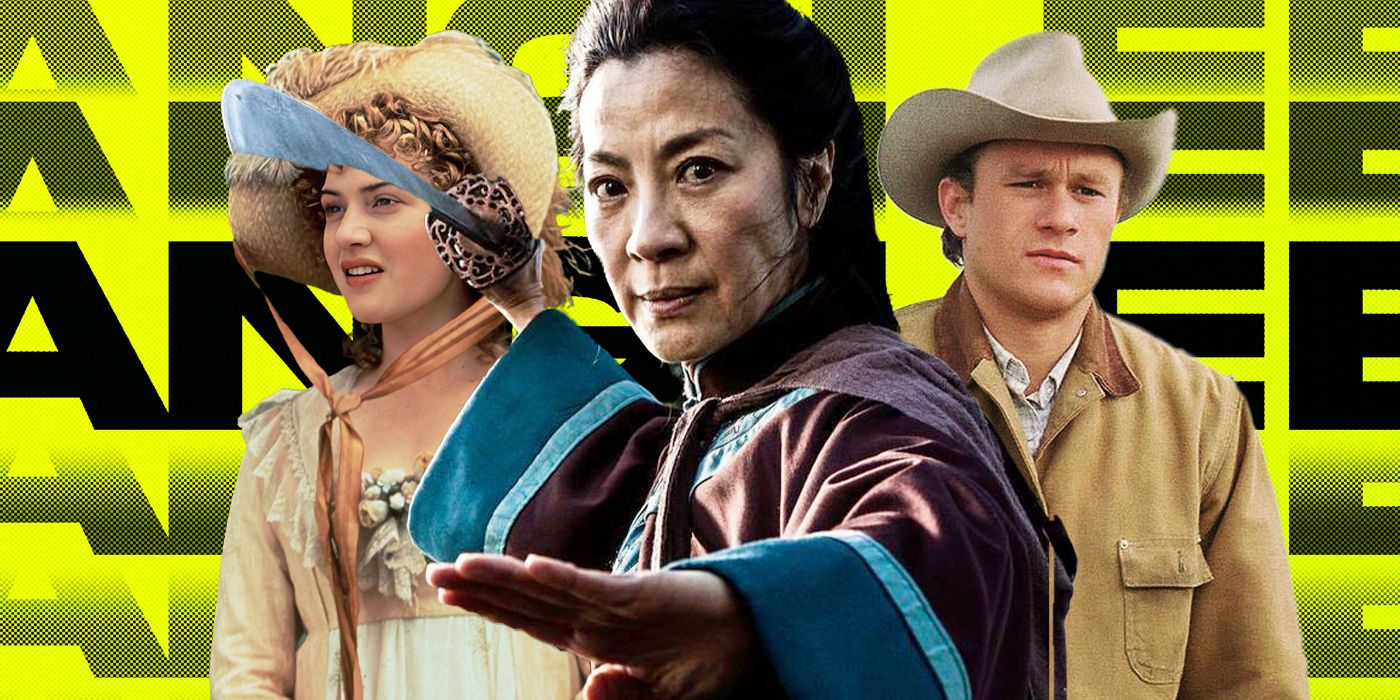The Big Picture
- Silly characters like Jar Jar Binks and C-3PO test the compassion of the heroes and reveal their true moral compass in the Star Wars saga.
- Despite being annoying, these characters unmask villains and provide comedic relief in the epic clash between good and evil.
- The presence of silly characters reminds us of the light side’s capacity for good while adding depth to the storyline by foreshadowing plot points.
From Gungans, to Ewoks, to Porgs, each Star Wars trilogy presents a cast of ridiculous, adorable, or goofy groups. Funny features and unintelligible sounds abound! For many fans, silly characters are unnecessary, annoying, or even detrimental to their beloved franchise. Star Wars is an epic clash between the forces of good and evil. Does the plot really need goofy distractions? Isn’t saving the galaxy enough to ask of the heroes without the added tasks of deciphering the grammar of Gungans or babysitting armed teddy bears? At first glance, perhaps. But saving the galaxy means saving it for everyone, not just the serious and competent. Despite their apparent irrelevance, silly characters foreshadow key plot points, unmask villains, and confirm the saga’s true heroes.
Jar Jar Binks Is More Important To the Prequels Than You Think
Jar Jar Binks (Ahmed Best). The name conjures rolled eyes and wistful thoughts of what Star Wars: Episode I – The Phantom Menace could have been without the clumsy, grammatically inept Gungan. Ridiculous but not that funny, goofy but not endearing, corny and offensive, Jar Jar Binks may be the most unpopular character in the Star Wars saga. Yet, intolerability is Jar Jar’s power. Jar Jar tests the compassion of Qui-Gon Jinn (Liam Neeson), Obi-Wan Kenobi (Ewan McGregor), Padmé Amidala (Natalie Portman), and other characters, and their responses show the audience who to root for. Treating annoying and foolish people with respect is a mark of decency, and George Lucas repeatedly deploys Jar Jar to distinguish heroes from villains.
The bullies and villains of Star Wars are mean and cruel to Jar Jar. In The Phantom Menace, Trade Federation vehicles nearly crush Jar Jar, plowing through the forest with disregard for the plants, animals, and sentient beings of Naboo. Faster droid tanks may have spared us a movie and a half of Jar Jar squealing at high pitch! But it is for the best that Jar Jar lives; Lucas deftly uses these seconds of film to summarize the villainous role of the Trade Federation quicker than any exposition of galactic politics could. Many times in the film, Boss Nass (Brian Blessed) bullies and derides Jar Jar, exiling him for clumsiness, threatening severe punishment, and questioning his intelligence. Even to an audience that Jar Jar annoys, it seems unfair to punish someone for their personality, rather than their actions.
On Tatooine, Jar Jar’s prehensile tongue is out in full force, and he ruins Sebulba’s (Lewis MacLeod) meal, giving the bully an excuse to attack Jar Jar (perhaps acting out some of the audience’s darkest desires). Not just comic relief, this scene reveals Sebulba as an antagonist and makes the audience want Anakin Skywalker (Jake Lloyd) to win the later pod race even more. In Star Wars: Episode II – Attack of the Clones, Chancellor Palpatine (Ian McDiarmid) and Mas Amedda (David Bowers) prey upon Jar Jar’s naïveté to manipulate him into giving Palpatine emergency powers — lending insight to the lengths Palpatine needs to go to seize power. It is easy to dismiss foolishness, but that is the point: Jar Jar Binks’ presence unveils bullies and villains.
George Lucas Uses Jar Jar To Test His Protagonists, Too
More than just contrast the cruelty of bullies with the kindness of protagonists, silly characters like Jar Jar also place protagonists on a spectrum of compassion that distinguishes true moral leaders. Jar Jar’s antics are irritating enough to watch — imagine how difficult they would be to live with! Yet, Qui-Gon Jinn and Obi-Wan Kenobi continue to welcome him on their adventure, even as the audience groans and rolls their collective eyes. Obi-Wan expresses sympathy when learning of Jar Jar’s exile — foreshadowing the open-heartedness of one of the saga’s most beloved Jedi. Qui-Gon saves the irksome Gungan multiple times. But as much as Qui-Gon — purportedly an example of decency — accepts Jar Jar and values his life, the irrepressible Gungan wears his politeness thin.
The Sith may test Qui-Gon’s power and intuition, but no one can test his patience like Jar Jar! Qui-Gon constantly grabs Jar Jar’s shooting tongue, admonishes him to avoid trouble, and insults his intelligence. It seems Qui-Gon knows he should treat Jar Jar kindly but does not want to — similar to the audience. But for every devil on one shoulder there is an angel on the other, and Padmé demonstrates the alternative. Rather than barely tolerate Jar Jar, Padmé gives him true respect. Padmé relies on Jar Jar to help her forge a planet-wide alliance with Boss Nass to repel the Trade Federation. In Attack of the Clones, she appoints Jar Jar to be Senator in her stead, trusting him to represent Naboo. Padmé sees past Jar Jar’s annoying tendencies to his honesty and earnestness — and proves herself the trilogy’s true moral center. Qui-Gon is an ally to respect; Padmé is the leader to follow.
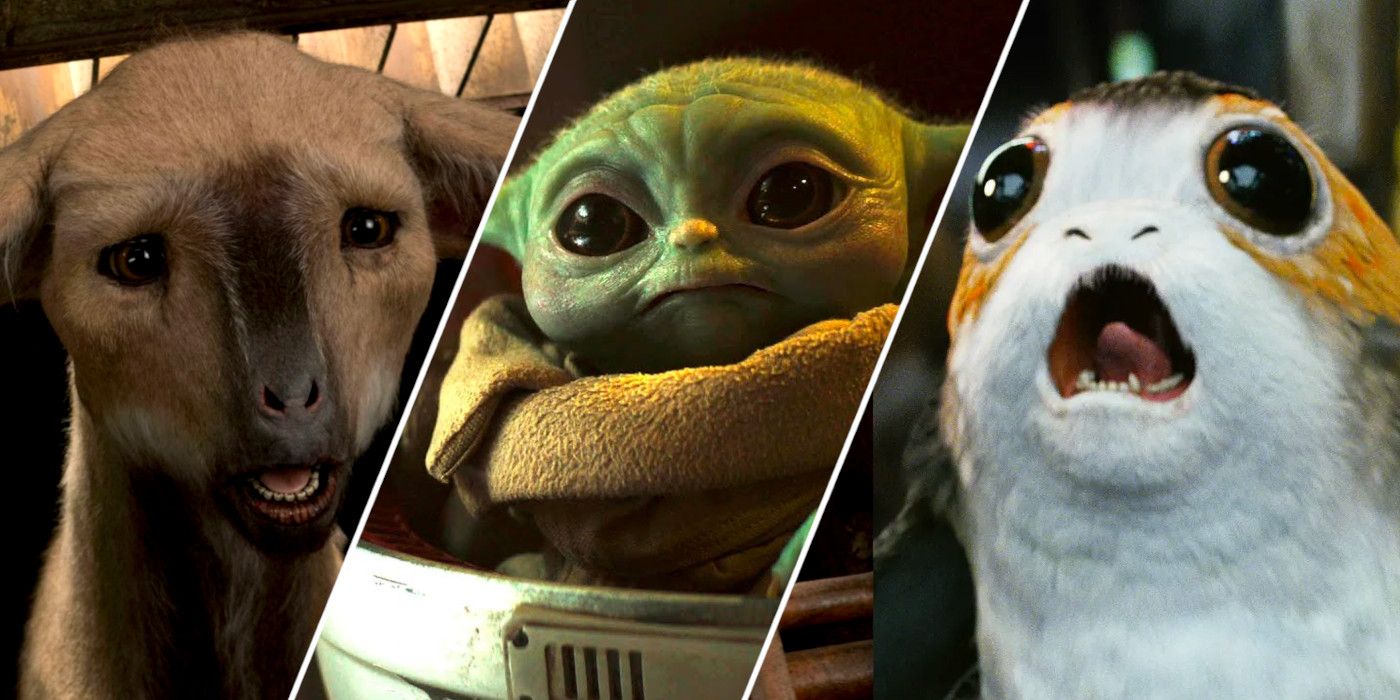
From Ewoks to Porgs: The 12 Cutest Creatures in the ‘Star Wars’ Universe, Ranked
Awwwwwwww!
Silly Characters Reveal the Morality of Star Wars’ Leaders
There are many characters across the saga whose absurdity measures the heroes’ capacity for kindness. In the original trilogy, C-3PO (Anthony Daniels) often annoys Han Solo (Harrison Ford). The protocol droid’s formality, inability to read social cues, and panic accentuates Han’s devil-may-care, rough-around-the-edges scoundrel identity. In Star Wars: Episode V – The Empire Strikes Back, from “Shut him up or shut him down!” to “Take the professor in the back and plug him into the hyperdrive,” Han frequently has sharp words for C-3PO at levels Luke Skywalker (Mark Hamill) and Princess Leia (Carrie Fisher) never come close to uttering. In Return of the Jedi, the Ewoks also test Han, and he draws his blaster when surrounded by the spear-wielding teddy bears. Lucas contrasts Han’s reaction to Leia, who offers Wicket (Warwick Davis) food, and Luke, who restrains Han and refuses to harm the Ewoks even as they prepare to cook him. Han’s instinctual reaction is reasonable. But Luke and Leia’s natural restraint and generosity is, well, Jedi-like, almost saintly — and reminds the audience who holds the group’s moral compass.
The droid BB-8 (Brian Herring) and the puffin-like Porgs of Ahch-To, with eyes that tug the heartstrings, provide opportunities for protagonists to show their heart in the sequel trilogy. In Star Wars: Episode VII – The Force Awakens, Rey (Daisy Ridley) saves the sassy, needy, and goofy BB-8 from a scavenger, welcomes him to her modest home, and later selflessly chooses to starve rather than trade him for food she desperately needs. Through BB-8’s eyes, the audience learns exactly who to cheer on. In Star Wars: Episode VIII – The Last Jedi, Chewbacca (Joonas Suotamo) roasts Porgs over his campfire before seeing other grief-stricken Porgs watching. The intimidating Wookiee growls, but then cannot bring himself to have the meal. The episode confirms the favorite sidekick’s conscience in the sequel era. The Star Wars saga is a struggle between good and evil, and goofy characters remind us of the light side’s capacity for good.
Droids, Ewoks, Fathiers, and Loth-Cats Foreshadow the Plot in Star Wars
When it seems silly characters may pull Star Wars too far from the plot, it turns out they hint at it all along. C-3PO retelling the highlights of Luke, Han, and Leia’s adventures to the Ewoks in Return of the Jedi foreshadows the victory the Ewoks will soon deliver. By recalling the heroes’ triumphs — almost a greatest hits list — C-3PO reminds the audience of the stakes and primes us for the trilogy’s climactic resolution. In The Last Jedi, Finn (John Boyega) and Rose (Kelly Marie Tran) witness obscenely opulent casino clientele race horse-like Fathiers. The mistreated Fathiers are both part of this offensively extravagant place and also become its righteous destroyers, underscoring how excessive wealth often comes with injustice. When Finn and Rose ride Fathiers to messily escape, it seemed the luxurious Canto Bight begged to be shattered all along.
Even the droids comically watching the lightsaber duel between Obi-Wan and Anakin Skywalker (Hayden Christensen) in Star Wars: Episode III – Revenge of the Sith remind an audience engrossed in the fight of the lava Anakin is about to fall into. One even pauses as if to say: “be careful!” In Star Wars: Rebels, the appearance of small, cute, cat-like creatures initially seems to be exposition of Lothal, but actually preludes Ezra Bridger’s (Taylor Gray) connection with the wolves that help liberate the planet. This brings Ezra’s story full circle; after his journeys across the galaxy, silly creatures were there all along to help him best the Empire.
The Star Wars franchise is available to stream on Disney+ in the U.S.
Watch on Disney+

